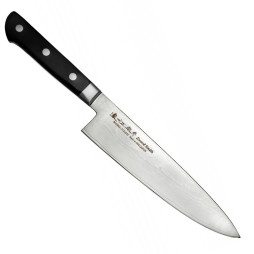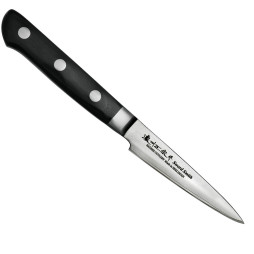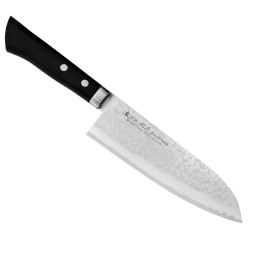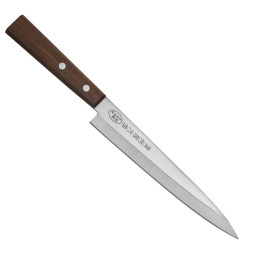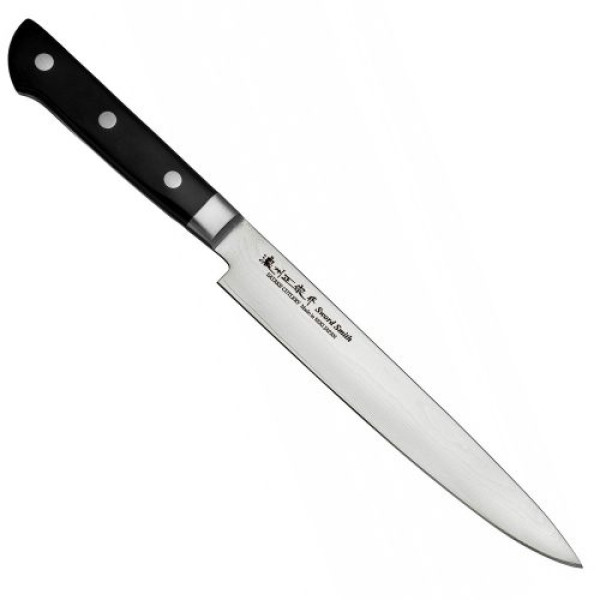
- Availability: 1
- Model: 805-551
Satake Daichi Japanese Damascus slicing knife 20 cm
This special kitchen knife is ideal for slicing poultry, various roasts and ham. Its blade is elongated, narrower and thinner than that of a traditional knife, so it enables precise and smooth cutting on the entire surface. Thicker knives often get stuck and shred the meat, making it difficult to serve.
The origin of the hams is obscure, but they probably originated in the late Middle Ages, in the 14th century. As a preserved meat, ham was an important food source in contemporary Europe, and slicing it required special knives. Early ham knives were probably simple, hand-forged knives with a broad blade and pointed tip.
There are a few theories about the origin of hams. Some believe that ham knives originated in Germany, where the term "Schinkenmesser" was used as early as the 14th century. Others refer to the French term "couteau à jambon", which dates back to the 16th century. Some believe that ham knives originated in England, where the term "ham knife" was first used in the 17th century.
Additional parameters
Blade material - 69-layer forged Damascus steel (MVS10Cob core)
Handle material - pakka wood
Hardness - 60 HRC +/- 1
Total length - 33.2 cm
Blade length - 20 cm
Blade width - 3 cm
Blade thickness - approx. 2.1 mm
Cutting edge design - symmetrical on both sides
Weight - approx. 150 g





























